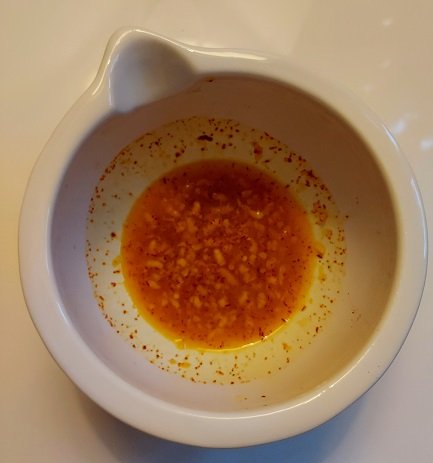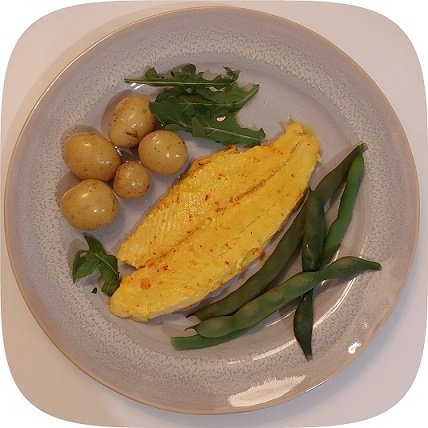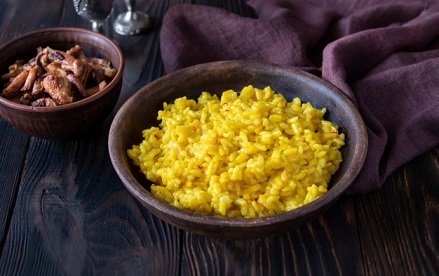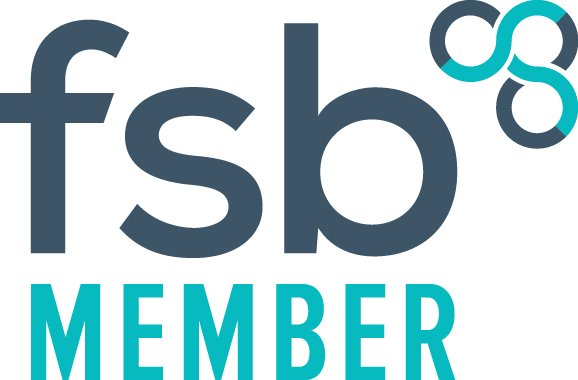Whether you are using saffron for cooking or as a herbal remedy the way to prepare it is simple. We recommend both the hot water and ice methods. Just add about 1 smidgen / half a pinch (10 to 20 strands) of lightly crushed saffron to your tea or hot water. Then allow it to brew for a couple of minutes.
Four forms of the spice are used for cooking:-
This is when the spice is ground to form a powder. This will infuse aroma and colour much quicker than the other forms but it will lose some of its flavours in cooking. To get the best out of powdered saffron make sure you only use the two methods of preparation we mentioned above. Add the spice to your food near completion time. Unless you frequently use saffron we don’t recommend keeping the powder in your spice cabinet. It’s prone to moisture and damp.
The strands are crushed using a mortar and pestle to the point where you get granules or small bits from 1 to 3 mm. This is the common and best method of using saffron. You can cook, bake and add it to your warm or cold drink.
Again use a mortar and pestle or simply break the strands between your fingers. Crush them until they are roughly half the original size. We recommend using this form in baking or adding to drinks. Saffron with milk is delicious.
These will make your dish look beautiful. However, to get most out of the spice we recommend crushing it first. 1g of crushed saffron will yield more flavour, colour and aroma than 1g of strands.
Consuming saffron carries little risk. A great way of adding it to your diet and making good use of saffron’s many health benefits (without any risks at all) is cooking with it. On the other hand, if you want to use it solely as a natural medicine, we recommend getting advice from a clinical nutritionist. Having 1g of saffron per day is safe but a high dosage can be toxic. Research considers 5g to be toxic, especially for pregnant women. There is also a slight chance of being allergic to saffron, especially if you have allergies to plants like ryegrass and olives
There are many wonderful dishes which contain saffron. In some, it might be less conspicuous, in others such as Risotto Alla Milanese and Shellfish Paella it is very prominent. Healthy eating and drinking have become a feature in our society, we are eating smaller portions with higher nutritional values. It’s more about feeling good, boosting mood and having more energy. Among the many saffron dishes and drinks we also recommend vegan and gluten-free Saffron Brown Rice and as an exciting alternative, this non-alcoholic spirit Xachoh which contains saffron amongst other botanicals. To purchase saffron you can follow this link to our shop.
Grilled Fish
Allow to rest for 5 minutes
Preparation
To make it a bit more exotic you can and a little ginger powder to your seasoning.



Vegan Risotto
Ingredients
Preparation
Saffron does wonders when used in seafood and this Bouillabaisse recipe will certainly get your taste buds excited.
If you are familiar with Iranian cooking you’ll know the importance of crispy rice or Tahdig. Tahchin is crispy saffron rice dish which can be enjoyed as a vegetarian dish or with any meat specially lamb or chicken.

